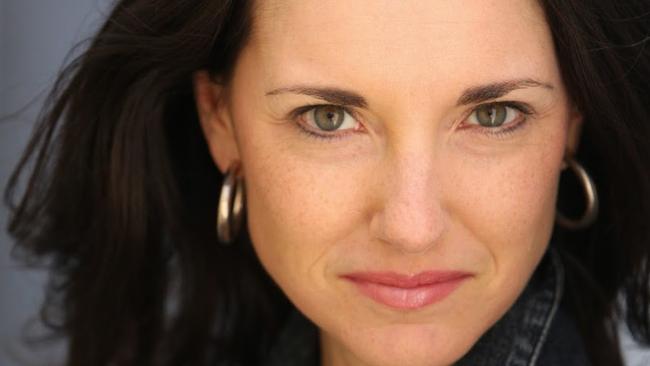Apple to be game-changer in augmented reality: Shauna Heller
Apple’s entry into the augmented reality space will be a game-changer and spells trouble for Microsoft and Intel.

An expert in new age technologies says the augmented reality craze is unlikely to take off unless Apple decides to enter the market. The good news for enthusiasts is that the tech giant is likely to dip its toes in the pool sooner rather than later.
Shauna Heller spent 18 months in a senior role at Oculus VR, the maker of the Oculus Rift virtual reality headset that began shipping two weeks ago. As developer relations specialist she was in charge of non-gaming and non-entertainment VR applications at Oculus.
Ms Heller, who was in Australia last week as a keynote speaker at a convergence conference examining virtual and augmented reality technologies, told The Australian that augmented reality technology would take off when Apple produced an AR headset.
“I’m confident that they’re moving in that direction, and everyone is,” Ms Heller said.
“When Apple gets in the game, we’ll start wearing the technology. Apple has gorgeous design capabilities.”
That isn’t good news for Microsoft and Intel who have already invested heavily in augmented reality, a technology that superimposes holograms into a viewer’s real world experience. Microsoft this month showcased its HoloLens AR viewer at its Build Developer Conference in San Francisco.
Ms Heller believes Apple is developing an augmented reality/virtual reality device similar to that offered by Oculus VR and rival HTC Vive headset.
“They’ve made acquisitions of companies in the AR space and it’s hard to imagine what else they would do with that technology other than some sort of virtual reality headset. I would wager less than five years,” she said.
There’s abundant evidence to suggest Apple is exploring the option. The Apple enthusiast’s website MacRumors refers to hires Apple has made from Microsoft’s HoloLens team and cites multiple software engineers with virtual reality experience who are working at Apple.
In 2013, The Wall Street Journal reported Apple’s acquisition of PrimeSense, an Israeli-based company developing 3D sensor technology. Techcrunch reported Apple’s acquisition of augmented reality company Metaio in May last year, and Swiss real-time motion capture firm Faceshift in September last year.
Apple has also sought patents for headsets offering both VR and AR experiences.
Ms Heller listed areas where virtual reality solutions were being developed now. They included advertising, arts, automotive, architecture, cinema, cultural institutions such as museums, education, medicine, music, publishing, science, social interaction and sport. 3D medical data could be displayed virtually before surgery. VR could also save movie studios a pile of money.
“Virtual reality will serve that role in a way that no other technology can,” she said.
VR headsets could bring people across the world together in one virtual environment but it was “a tough call” to know if these holographic interactions would be popular.
“Whether it’s Project Sansar, (virtual calling tool) AltspaceVR, or even something more robust like holograms, it’s too early to say,” she said. “But to sit in a virtual movie environment with four other people whose head motion is being tracked … is still very, very compelling.”
She said the coming rebirth of Second Life as a VR experience meant “you can live that Second Life”. In education, students could study French with a class in the countryside of France, and virtually travel to Egypt to visit the ruins. “Museums are hot developers right now,” she said. “They’re hiring a lot of developers to translate their physical assets into 3D models that people can then explore online.”
Ms Heller began professionally as a copywriter and producer making movie trailers, TV and radio spots for movie studios.
In 2004 she worked for Cimarron Group in Los Angeles. It did movie and TV marketing for the studios and television production companies. “There were graphic designers, editors, writer and producers so it was creative. It was technology, and motion graphics as well. I just liked being in the middle of it all,” she said.
Ms Heller moved to Fisher Technical Services in Las Vegas, which produced computer-controlled winches that flew around Cirque de Soleil performers. They were used on movie sets to fly stunt performers.
She began working at Oculus in early 2014. “The work with Fisher Technical led to me working with many other creative technical companies that didn’t have the resources or the expertise to have a director of business development or were not focused on relationship building.
“Then one day in 2012 I heard about this new display on Kickstarter, Oculus Rift, and I did some research on it … and I said to myself: ‘That’s a product that a lot of my companies would be interested in.’
“Then a colleague said: ‘There’s someone you would like an introduction to. He’s just gone to work with this little company down in Irvine, they make this headset. I know the COO (Laird Malamed) there, I really think you should meet him, and the rest of history.”
She said Oculus founder Palmer Luckey was “a visionary of the next generation of immersive interaction”.
Ms Heller has formed her own company, Clay Park VR, to offer VR strategies and advisory services to corporations, brands, institutions and developers.



To join the conversation, please log in. Don't have an account? Register
Join the conversation, you are commenting as Logout